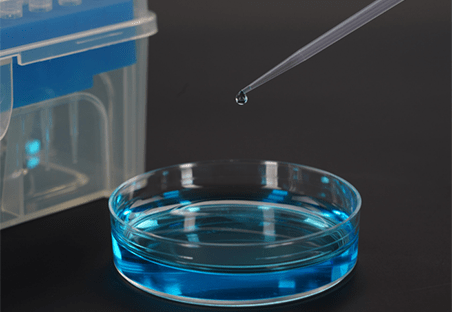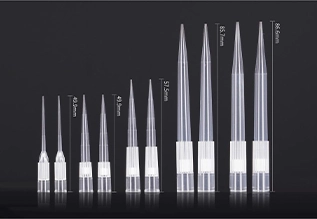Small volumes of liquid can be transferred with pipette tips, which are disposable plastic accessories that fasten to the end of a pipette. They come in a range of sizes and styles to suit various pipettes and applications, and they are usually constructed of polypropylene or polycarbonate. It depends on the type of pipette tip and whether or not it is sterile. The process of sterilizing a substance or object involves getting rid of or killing all microorganisms, such as bacteria, viruses, and fungi. In contrast to non-sterile pipette tips, sterile tips are made expressly to be devoid of microorganisms. In situations where sterility is crucial, like in cell culture or molecular biology, sterile pipette tips are usually utilized. Non-sterile pipette tips are suitable for use in routine laboratory work and other situations where contamination is not a concern.
What Are the Differences Between Sterile Tips and Non-Sterile Pipette Tips?
The degree of sterility is the primary distinction between sterile and non-sterile pipette tips. Non-sterile pipette tips are not intended to contain microorganisms, whereas sterile pipette tips are. In applications where sterility is crucial, like cell culture or molecular biology, where even a small amount of contamination can ruin an experiment or produce false results, sterile pipette tips are therefore indispensable. On the other hand, non-sterile pipette tips can be employed in situations like routine laboratory work where contamination is not a major concern.
Sterile Pipette Tips
Sterile pipette tips are usually composed of polypropylene or polycarbonate and undergo a specific treatment to eradicate any potential microorganisms. To avoid recontamination, they are subsequently packaged in a sterile setting. In situations where sterility is crucial, sterile pipette tips are necessary even though they are usually more expensive than non-sterile tips.
Non-Sterile Pipette Tips
Non-sterile pipette tips may contain traces of bacteria or other contaminants because they are not treated to destroy microorganisms. In applications where contamination is not a major concern, they can be used at a lower cost than sterile pipette tips. It’s crucial to remember, though, that improper handling can contaminate even non-sterile pipette tips.

How Are Pipette Tips Sterilized?
There are several ways to sterilize pipette tips, and each has benefits and drawbacks of its own. The particulars of the application and the properties of the pipette tips determine which sterilization technique is best. Here are some of the most common methods used to sterilize pipette tips:
- Autoclaving
Autoclaving is a popular sterilization technique that uses high-pressure steam to destroy microorganisms. The procedure entails subjecting the pipette tips to steam for at least 15 minutes at 121°C (250°F). Although autoclaving can be time-consuming and may not be appropriate for all materials, it is a dependable and efficient way to sterilize pipette tips.
- Gamma irradiation
High-energy gamma rays are used in gamma irradiation, a sterilization technique, to destroy microorganisms. The pipette tips are subjected to gamma rays from a radioactive source during the procedure. Sterilizing pipette tips with gamma irradiation is a fast and efficient process, but it needs specific tools and handling techniques.
- Ethylene oxide (EO) treatment
A gas called ethylene oxide (EO) is used to destroy microorganisms. In a sealed chamber, the pipette tips are exposed to EO gas during the procedure. Due to the toxicity of EO gas, EO treatment is a reasonably quick and efficient way to sterilize pipette tips, but it does require careful handling and ventilation.
- Chemical sterilization
Chemical sterilization is the process of killing microorganisms with liquid or gaseous chemicals. Sterilization can be accomplished with a variety of chemicals, including bleach, ethanol, and isopropanol. Chemical sterilization is a reasonably easy and affordable method, but it can leave residues on the tips of the pipette and may not be effective against all microorganisms.

How Can I Ensure That My Pipette Tips Are Sterile?
- Purchase sterile pipette tips from a reputable supplier
Reputable suppliers guarantee sterility by adhering to strict sterilization protocols and providing certifications. Purchase pipette tips from reputable sources to reduce the risk of contamination. Scopelab is a good choice of lab consumable supplier.
- Store sterile pipette tips in their original packaging
The original packaging serves as a physical barrier that keeps germs, viruses, and other airborne contaminants from getting to the sterile pipette tips. Microorganisms cannot enter the packaging material because it is often composed of non-porous, impermeable materials. The sterile pipette tips are kept in a controlled environment by the original packaging, which shields them from moisture, humidity, and temperature changes that can jeopardize their sterility.
- Use one pipette tip per sample
Pipette tips are made to be used only once to stop contaminants from moving from one sample to another. Reusing pipette tips can contaminate new samples with leftovers from earlier studies, which could compromise the experiment’s integrity or produce unreliable results. Cross-contamination is the transfer of contaminants from one sample to another, which can affect the viability of cells or organisms in culture or produce inaccurate results. Cross-contamination is more likely when pipette tips are reused because the tips may hold onto minute amounts of contaminants from the prior sample.
- Regularly clean and disinfect the pipette
Clean and sanitize your pipette as directed by the manufacturer. By doing this, it will be less likely for contamination to build up on the pipette and spread to the pipette tips.

Conclusion
In the laboratory, pipette tips are a vital tool that makes it easy and efficient for researchers to conduct precise, accurate, and contamination-free experiments. Because of their adaptability, low cost, and capacity to safeguard samples and pipettes, they are indispensable in contemporary laboratory operations. To avoid contamination, guarantee accurate experimental results, preserve research integrity, and keep a safe and legal laboratory environment, it is essential to know whether pipette tips are sterile. Scientists can protect the caliber of their research and further scientific understanding by being aware of and following appropriate pipette tip usage procedures.





